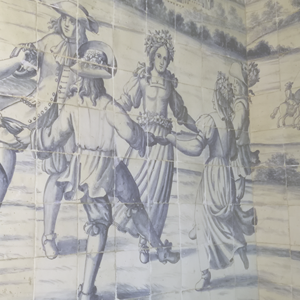Bibliography
Type
Conference article
Year
2019
Title
The Safeguarding of the Fishing Cultural Heritage
PDF doc
Abstrat
Fishing influences the way of life and world view of communities devoted to this activity since their origins. Fishing has become not only a harvesting activity but also a way of living for them as a result of the close interaction between fishing, communities and natural resources. Fishing refers to all facets of culture producing know-how, skills and techniques passed down from one generation to the next. Fishing also involves the creation of devices, gears or tools among other technological products, and catalyzes some other closely related activities; characterizing society as a whole. Cultural Fishing Heritage is fishing societies and the culture of fishing all together. This paper review the know-how and fishing practices, including devices, gears, tools and real state, that have been recognized as intangible cultural heritage in Western Europe. It uses inventories, administrative records, lists or catalogues as tools for doing this at state, regional and industry levels. This paper goes through 36 inventories of 15 countries looking into expressions of intangible fishing cultural heritage and classifies it according UNESCO criteria generating a data base (oral traditions and expressions, performing arts, social practices, rituals, and festive events, knowledge and practices concerning nature and the universe, knowledge and skills to produce traditional crafts). We analyzes how intangible fishing cultural heritage officially recognized influences and, at the international level, how could be influenced by the UNESCO Convention for Safeguarding Intangible Cultural Heritage according its criteria, using the aforementioned data base. The main objective of this work consists of classifying intangible fishing cultural heritage according the kind of fishing activity and the exploited natural resources in order to evidence common patterns, its interaction with ecosystems and specially, relevant absents that needs to be listed / recorded to promote their safeguarding and protection. Moreover, we focus on examining intangible fishing cultural heritage recovery so that it is used to promote tourism development in coastal communities. We complement the aforementioned cultural heritage inventories with records and historical documents about fishing techniques like the Diccionario of Sañez Reguart or the Traité des pesche of Duhamel de Monceau in the Eighteenth Century, and later documents and records from different archives. Methods combine qualitative and quantitative techniques. First, we carried out a reference search in several archives to analyze historical documents; second, we completed historical documents available with administrative records of different public entities (state and regional) devoted to protect and safeguard intangible heritage along Western Europe countries; third, we did an ethnographic research (collection of documents and photographs, participant observation, interviews with informants, etc.) for some relevant case studies in South Spain (Andalucía) and Portugal; and finally we applied multivariate analysis techniques like principal component, cluster and discriminant analysis using quantitative and qualitative information to investigate common patterns, significative aggregated factors and classifying intangible cultural heritage into different types. Quantitative information variables included were age of the inscription, groups involved in its defense, population of the referenced geographic area, extension of the area in which it is developed, income per capita of the area, ratios relative to tourist flows, fishing fleet of the region, or catches and species, among others. Qualitative information was modeled using dummy variables. Results show that discriminant functions estimated allowed to classify appropriately different expressions of intangible fishing cultural heritage. Additionally, results allowed to test spacial differences among the different expressions of cultural heritage.
Keywords
Bibliographic reference
DE MADARIAGA, Celeste Jiménez, DEL HOYO, Juan José García, CASTILLA-ESPINO, David (2019) "The Safeguarding of the Fishing Cultural Heritage", in Conference: IX Workshop in Cultural Economics and Management (9EWCEM), At Meknes (Morocco) [online] Available at: https://www.researchgate.net/publication/332523560_The_Safeguarding_of_the_Fishing_Cultural_Heritage [Accessed 30/05/2019]








